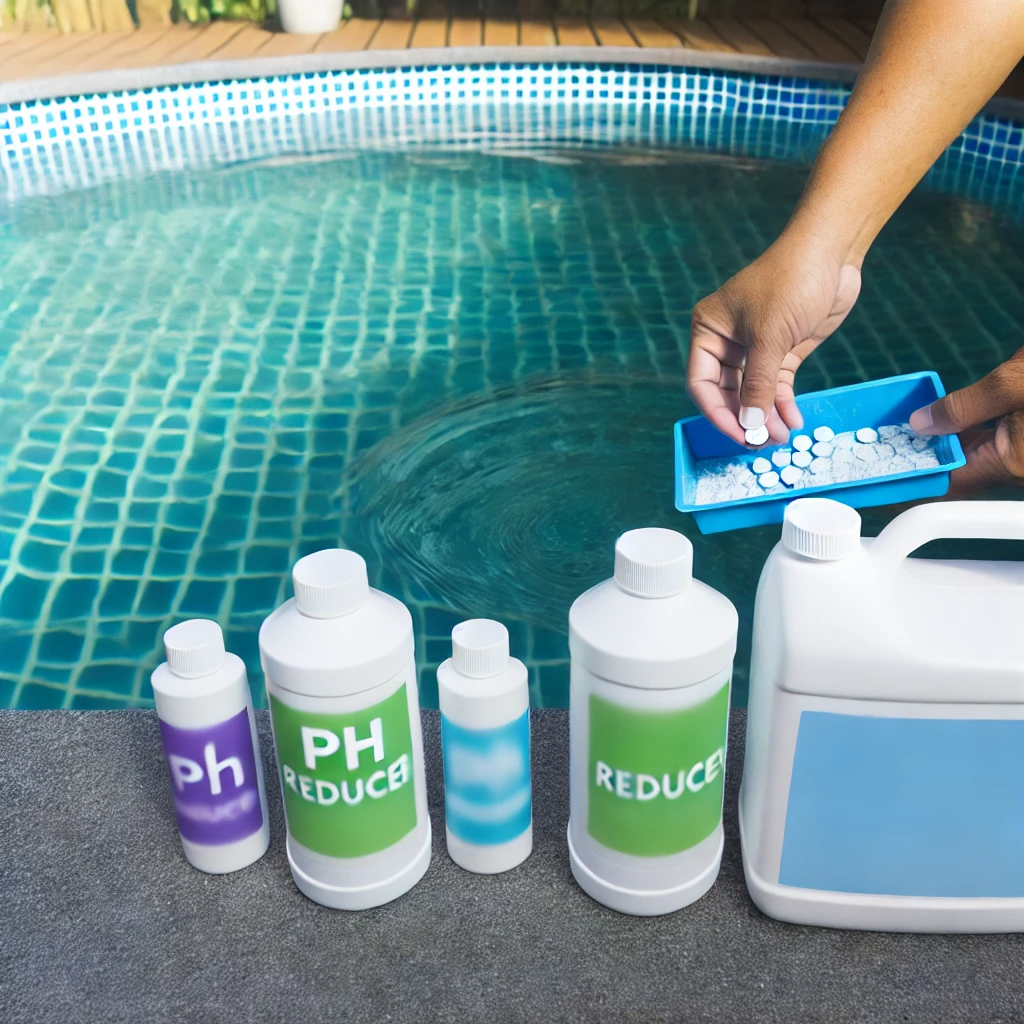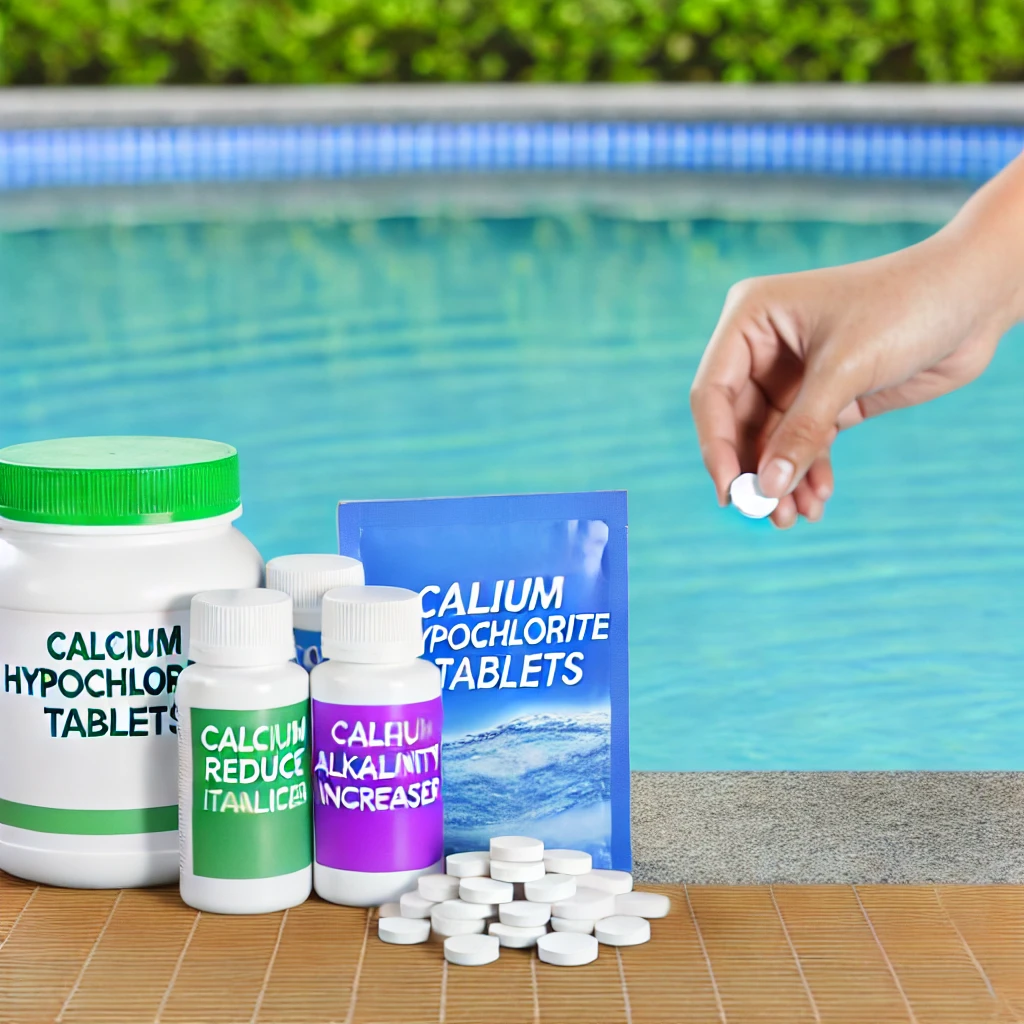Maintaining a well-balanced swimming pool is essential for ensuring water safety and clarity. Calcium hypochlorite tablets are a popular choice for pool sanitization due to their effectiveness in killing bacteria and algae. However, using calcium hypochlorite tablets requires careful balancing with other pool chemicals to prevent issues like scaling, cloudy water, and pH imbalances. In this article, we’ll explore how to effectively balance calcium hypochlorite with other pool chemicals to maintain a healthy swimming environment.

I. Understanding Calcium Hypochlorite
Calcium hypochlorite is a powerful chlorine-based compound commonly used to sanitize pool water. When dissolved, it releases free chlorine, which disinfects the water by killing harmful microorganisms. However, calcium hypochlorite tablets also introduce calcium into the water, which can affect water hardness and pH levels. To maintain a balanced pool, it’s crucial to manage these factors alongside other pool chemicals.
II. Balancing pH Levels
Maintaining the correct pH level is vital for effective pool sanitization. The ideal pH range for pool water is between 7.2 and 7.6. Calcium hypochlorite tablets can raise the pH level, making the water more alkaline. To prevent this, regularly test the pH levels using a reliable pool test kit. If the pH level rises above the recommended range, add a pH reducer, such as muriatic acid or sodium bisulfate, to bring it back into balance. Monitoring and adjusting the pH levels ensure that the chlorine remains effective and the water stays comfortable for swimmers.
III. Managing Water Hardness
Calcium hypochlorite tablets increase calcium levels in the pool, which can lead to higher water hardness. Hard water can cause scaling on pool surfaces and equipment, leading to potential damage. To manage water hardness, regularly test the calcium hardness level of your pool water. The ideal calcium hardness level is between 200 and 400 parts per million (ppm). If the calcium level exceeds this range, consider using a water softener or partially draining and refilling the pool with fresh water. This helps prevent scaling and keeps the water balanced.
IV. Controlling Alkalinity
Total alkalinity is a measure of the water’s ability to resist pH changes. Maintaining the proper alkalinity level is crucial for stabilizing the pH. The ideal range for total alkalinity is between 80 and 120 ppm. Calcium hypochlorite tablets can raise alkalinity over time, potentially leading to pH instability. If the alkalinity level rises above the recommended range, add an alkalinity reducer to lower it. Regular testing and adjustment of alkalinity help maintain a stable pH, ensuring that calcium hypochlorite tablets work effectively.
V. Balancing with Cyanuric Acid
Cyanuric acid is a stabilizer that protects chlorine from being degraded by sunlight. When using calcium hypochlorite tablets, which do not contain cyanuric acid, it’s important to monitor the cyanuric acid level separately. The ideal cyanuric acid level is between 30 and 50 ppm. If the level is too low, add cyanuric acid to the water to maintain this range. However, be cautious not to exceed 50 ppm, as too much cyanuric acid can reduce chlorine’s effectiveness. Balancing cyanuric acid ensures that the chlorine from calcium hypochlorite remains active and efficient.
VI. Preventing Over-Chlorination
Over-chlorination can occur if too many calcium hypochlorite tablets are added to the pool. Excessive chlorine levels can lead to skin and eye irritation, as well as an unpleasant chlorine odor. To prevent over-chlorination, carefully follow the manufacturer’s dosage instructions for calcium hypochlorite tablets. Regularly test the free chlorine level to ensure it stays within the recommended range of 1 to 3 ppm. If chlorine levels are too high, temporarily stop adding tablets and allow the chlorine to dissipate naturally. This helps maintain a safe and comfortable swimming environment.
VII. Using Algaecides Effectively
Algaecides are often used in conjunction with calcium hypochlorite tablets to prevent algae growth. However, some algaecides can react with chlorine, reducing its effectiveness. When using algaecides, choose a product that is compatible with chlorine-based sanitizers. Apply the algaecide according to the manufacturer’s instructions, and avoid adding it simultaneously with calcium hypochlorite tablets. Staggering the application times allows both chemicals to work effectively without interfering with each other.
VIII. Coordinating with Pool Shock Treatments
Shocking the pool is a process of adding a large dose of chlorine to quickly raise the chlorine level and eliminate contaminants. Calcium hypochlorite tablets can be used for regular chlorination and shocking. However, after shocking, it’s essential to allow the chlorine level to return to the normal range before resuming regular tablet use. Overlapping shock treatments with regular chlorination can lead to over-chlorination. By coordinating shock treatments with the use of calcium hypochlorite tablets, you maintain a balanced and safe pool environment.
IX. Regular Monitoring and Adjustments
Balancing calcium hypochlorite with other pool chemicals requires regular monitoring and adjustments. Invest in a high-quality pool test kit to check pH, alkalinity, calcium hardness, cyanuric acid, and chlorine levels. Testing the water at least twice a week during peak swimming season helps identify imbalances early. When adjustments are needed, make them gradually to avoid sudden changes in water chemistry. Consistent monitoring ensures that your pool remains balanced, clean, and safe for swimmers.

X. Conclusion
Calcium hypochlorite tablets are a powerful tool for maintaining pool cleanliness, but they must be balanced with other pool chemicals to ensure a safe and enjoyable swimming experience. By carefully managing pH levels, water hardness, alkalinity, cyanuric acid, and chlorine levels, you can prevent common issues like scaling, cloudy water, and over-chlorination. Regular testing, monitoring, and adjustments are key to keeping your pool in optimal condition. With the right approach, you can effectively balance calcium hypochlorite with other chemicals, ensuring a well-maintained pool that everyone can enjoy.